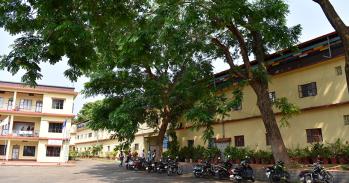
A landmark study of divided cities such as Jerusalem and Belfast suggests that while physical divisions remain these cities cannot thrive, and that a 'post-conflict’ phase in these urban centres can be a misconception.
A landmark study of divided cities such as Jerusalem and Belfast suggests that while physical divisions remain these cities cannot thrive, and that a 'post-conflict’ phase in these urban centres can be a misconception.
In divided cities, place-based research and activism can enable communities to collectively reclaim their memories.
Wendy Pullan
Divided cities such as Jerusalem, Belfast and Nicosia will permanently retain the symptoms of cities at war while the physical features of their division remain, says research announced today.
A five-year, cross-disciplinary study of some of the world’s most troubled cities has led researchers to believe that the very concept of ‘post-conflict’, often cited by political leaders, cannot apply to divided cities - as these urban conflicts don’t begin or end in the same way that wars do. Instead, they colour urban situations for decades.
But for the Conflict in Cities (CinC) team - comprising researchers from the universities of Cambridge, Exeter and Queen’s Belfast - these cities also offer glimmers of unity in the everyday interactions of their citizens.
The walls, buffer zones and checkpoints of imposed division in cities such as Jerusalem and Nicosia - both central to the study - are often used as temporary measures to quell bloodshed resulting from political, religious and ethnic conflict.
However, they nearly always become permanent. Even when reunification occurs, it can cost vast sums of money and leave large former border areas derelict in the city centre - as in the case of Berlin.
The researchers will be presenting their findings, along with a series of briefing papers on all aspects of the research, from infrastructure to regeneration, in the Great Hall of King's College, London on the evening of 8 November as part of the Economic and Social Research Council’s Festival of Social Science.
The Economic and Social Research Council’s Large Grants Programme has funded the Conflict in Cities project.
“Once a city is divided, the dynamic of life is disrupted as it applies to centres, peripheries, public spaces. Reversing this becomes increasingly formidable as this separation of populations undermines and can eventually prevent resolution of conflict,” said Dr Wendy Pullan, from Cambridge’s Department of Architecture and Principle Investigator for CinC.
“Divisions become ideological artefacts embodying the very conflict they seek to mitigate. The wall, as it was in Berlin and is now in Jerusalem, have become, arguably, the most recognisable images of these cities.”
It can be easy to view conflict as simply two states, war and peace, but for CinC this limits any approach to either trying to manage or resolve conflict, both of which can seem hopeless at times.
Rather, the researchers suggest an in-between state, not war or peace, which they term ‘conflict time’ - representing a longer period where violence “may ebb and flow”, and urban institutions can develop that slowly help to realise a more open and integrated city.
If these cities are to develop while experiencing high levels of conflict, CinC believe that international efforts need to connect directly with communities to ensure that funds are channelled away from politically biased, short-sighted plans.
“Local participation in planning decisions is vital in giving people a stake in the rejuvenation of their cities and a role in addressing their conflicts.”
In divided cities, people think very carefully about their movements. In Nicosia for example, researchers found that young Cypriots completely avoid areas containing the UN buffer zone, which they associate with insecurity and fear.
However, the researchers also found that, while people who live in these cities often assume they have no connection to the ‘other side’, research shows there is more interaction than they think.
“Everyday life tends to continue and populations find ways of coping and being very resilient as they go about their lives. Sharing of space often depends on people having mundane reasons to be together: shopping, working, healthcare,” said Pullan.
“Even if there is little interaction, shared memories and experiences will develop. The slightest interaction, like hearing language of the ‘other’ community, offers continuity of experience.”
For CinC, urban planning is critical to ensuring that fragile social arrangements which encourage mixing are not disrupted, and positioning communities with common identities - such as social and occupational status - in proximity can help overcome divisions.
Interestingly, modern shopping centres were found to be a key consideration: “The globalised and neutral nature of shopping malls can help dilute conflict. In Jerusalem for example, Palestinians spend time at the Mamilla shopping area - partly due to the global brands available, but also because signage is in English, so the environment is felt to be less ‘Israeli’ or Palestinian’,” said Pullan.
Although Pullan goes on to say that such arrangements don’t necessarily reflect Palestinian “choice”, as Israeli policies leave little alternative. “Such neutralisation can be coercive,” she said.
Education is also highlighted by the researchers as intrinsic to overcoming divisions. Pullan talks of the need to “reclaim memories” where biased political systems have adopted policies of “official amnesia”, such as in the case of Lebanese schools which evade critical examinations of the war and subsequent tensions.
“In divided cities, place-based research and activism can enable communities to collectively reclaim their memories,” explained Pullan.
There are no ‘quick fixes’. The research shows that urban conflicts are long and complex, but so is the life of cities - and that must be taken into account if divided cities are to thrive.
“Cities don’t function like states, and urban areas that have national frontiers running through them are the most volatile, but can also lead the way in demonstrating how conflict can be resisted.”
This work is licensed under a Creative Commons Licence. If you use this content on your site please link back to this page.





